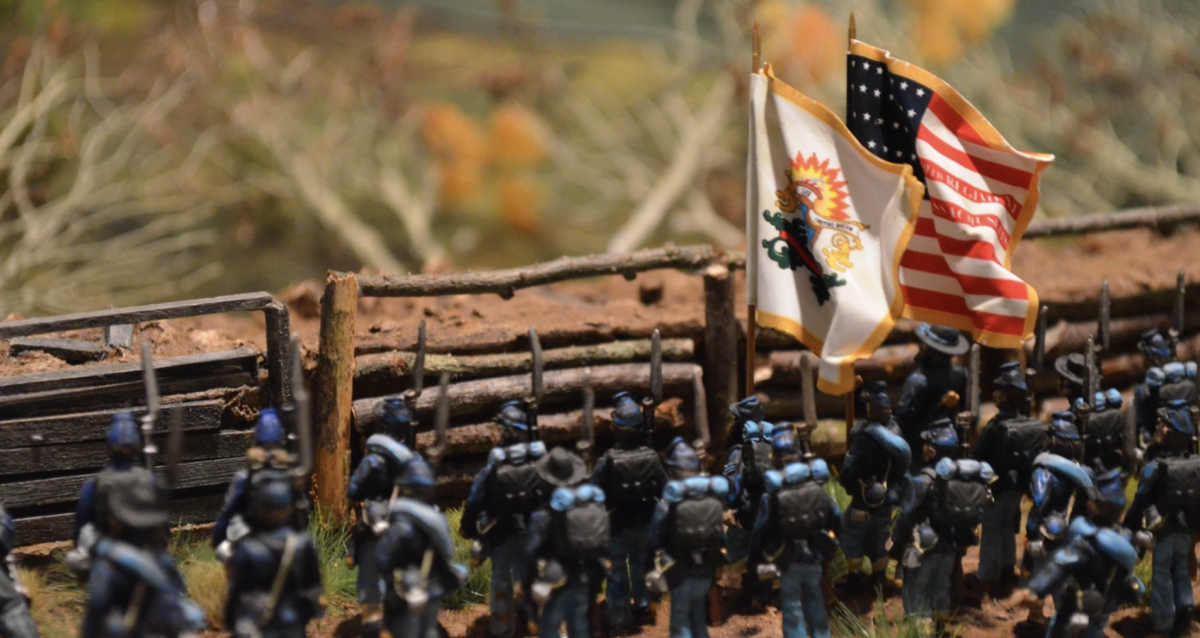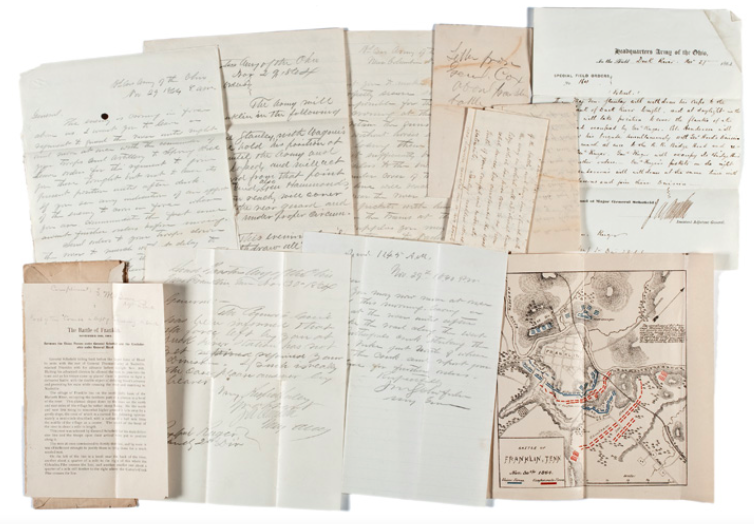Partial auction listing:
One of the notable features of the collection is that for much of the war, the correspondence is two way, including Ruger’s letters to his wife and hers back. Ruger was often reticent to relay details on the battles he experienced, assuming both that his wife would read about things in the newspapers and that she would not want to hear the gore. His letters, however, reflect his interests in the politics of the military and his relentless, hard-boiled attitude toward conducting warfare.
In the first week of November, Ruger was offered command of a Division in 28th Corps in Tennessee under George Thomas unless Sherman and Slocum (who did not want to have him leave their command) could offer him one. Ruger describes his meeting with Sherman: “I gave [Sherman] Gen. Slocum’s letter and remarked that if the two Corps of the Army of the Cumberland the 14th and 20th were to be operated as an army it would place Gen. Williams in command of the 20th Corps and that would give me the Division during the campaign at least. He shook his head and said enough to let me know he had no such intention and directed the order for my transfer to be made out, said that it was not a good plan to ‘stay too long in one hole’ and besides Gen Schofield was very anxious to have me come.” He received command of 2nd Div., 28 Corps, shortly before the Battle of Franklin, where he would earn a lasting reputation.
The correspondence relating to Franklin begins with a no nonsense letter from Schofield on Nov. 28: “I want you to make your position perfectly secure so as to render it impossible for the enemy to effect a crossing at that place. You may retain the guns which you have without horses even at the risk of losing them. If the bridge is not sufficiently burned to render it useless to the enemy complete it tonight under the cover of darkness….” There are five more orders from Nov. 29 and 30 (the day of the battle), beginning with the order for J.D. Cox to march into Franklin and dig in while Ruger covers until all have passed. At 8 a.m. on the 29th, word the order went out “The enemy is coming in force above us,” ordering Ruger to leave a regiment to guard the river. When it was over, Ruger described the Battle of Franklin to his wife: “The attack of the enemy was very strong and determined much the hardest I have seen west a good deal like the attacks of [Stonewall] Jackson. We repulsed the enemy with loss, but as A.J. Smith’s command and other were not up we fell back here where they are for concentration. The force we had was much smaller than the enemy….” The collection also includes a handsome field map of the area along the Duck River, Tenn., and a post-war letter from Gen. Jacob Dolson Cox — who is often credited with saving the center of the line at Franklin (where Ruger was located) — requesting information on the battle to combat critics.
1849-1865; ca 865 items (ca 775 war date).
Source: Cowan’s Auction, June 2009

